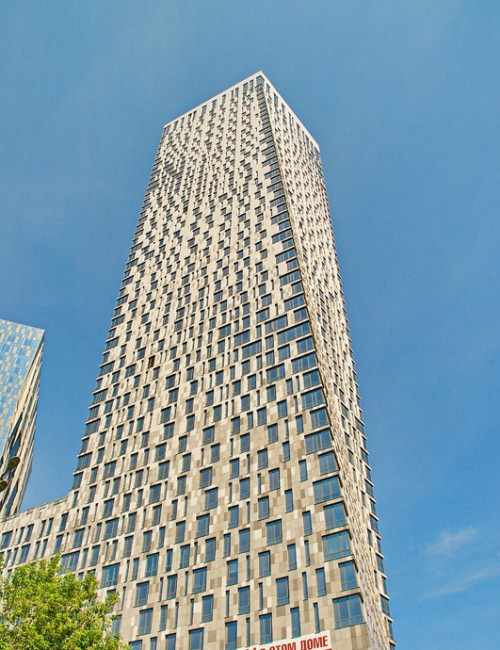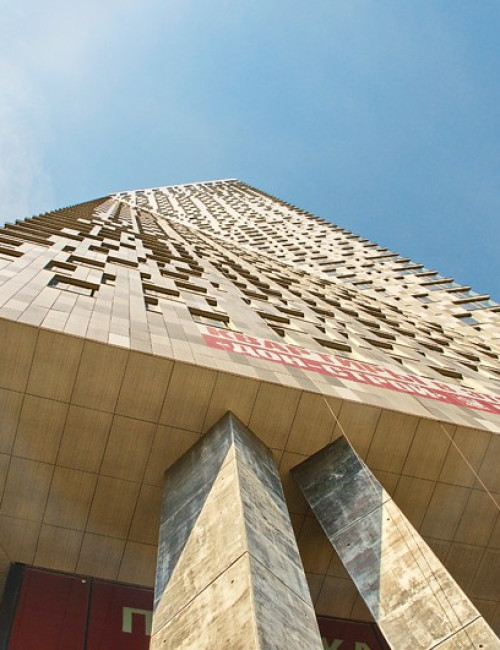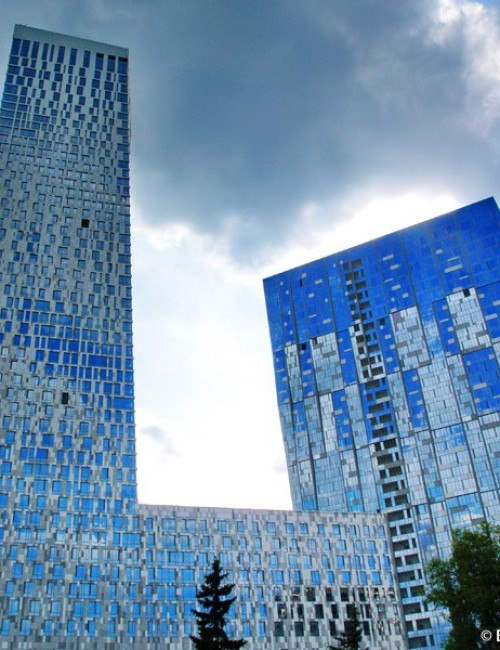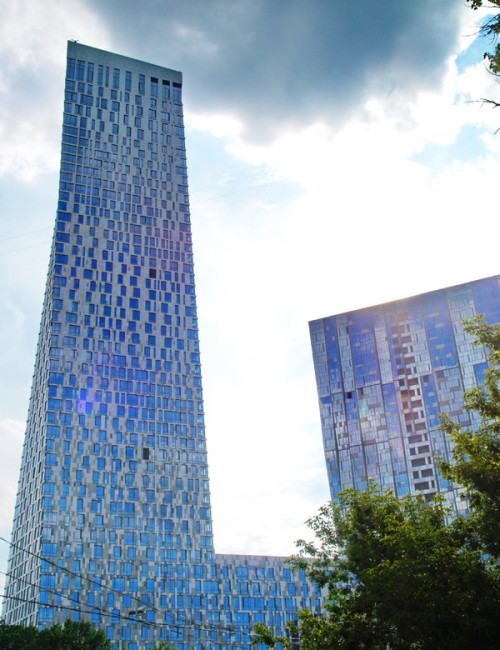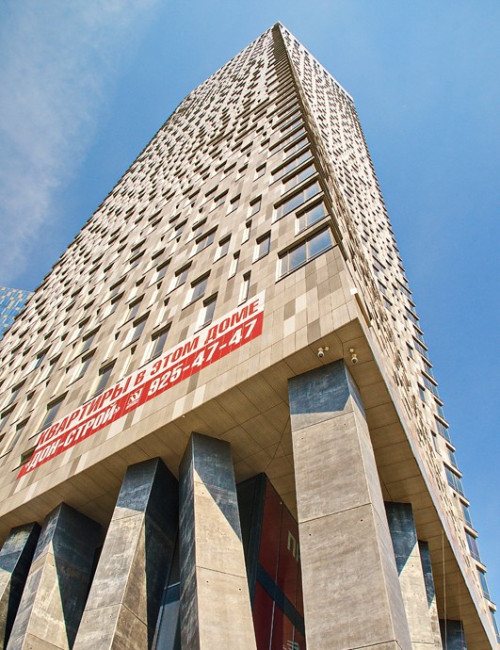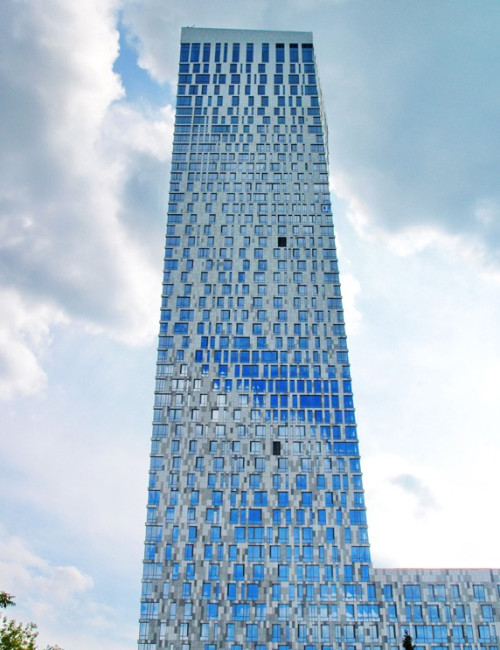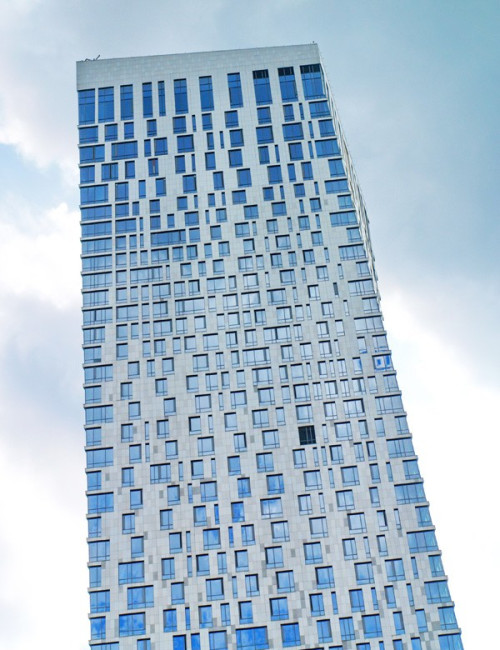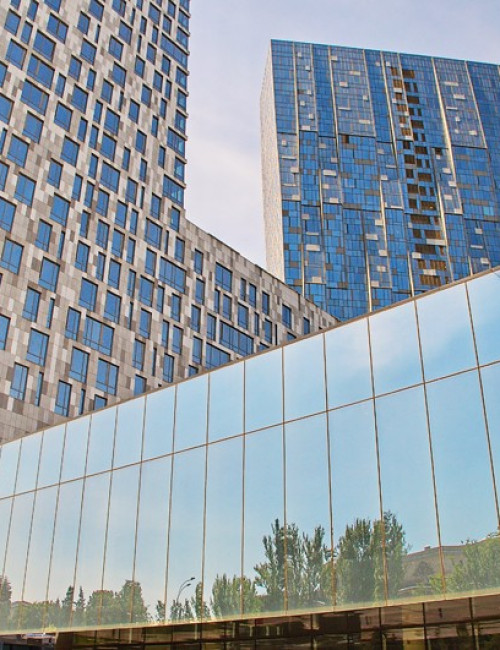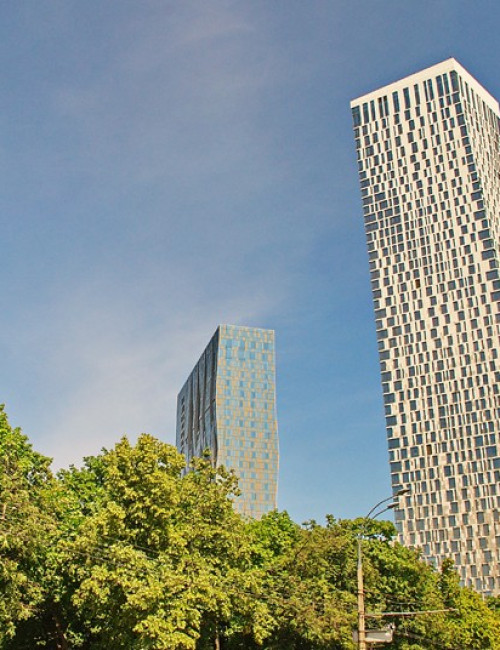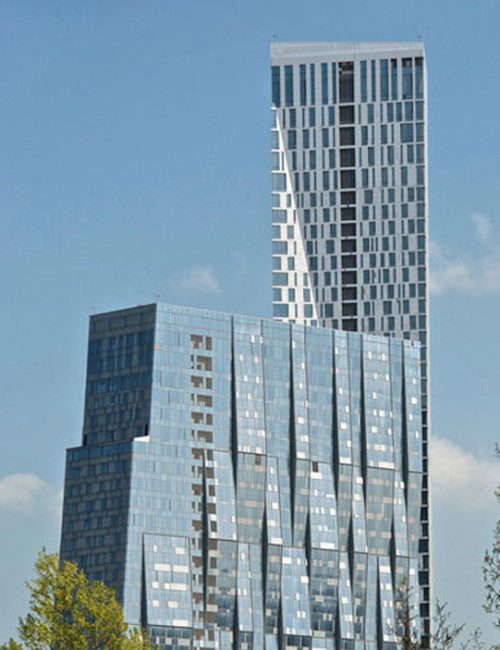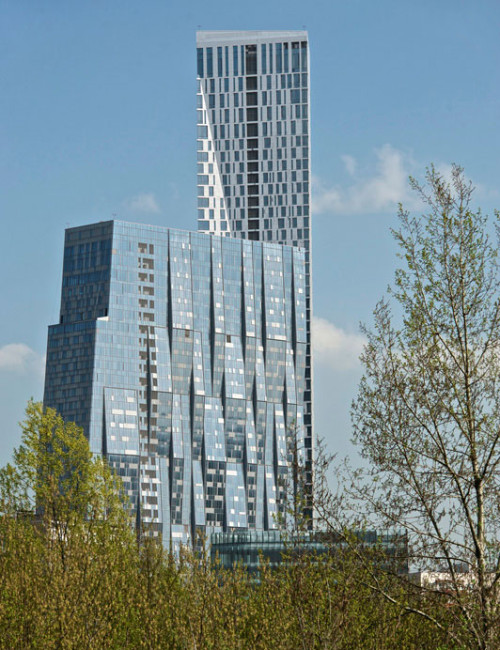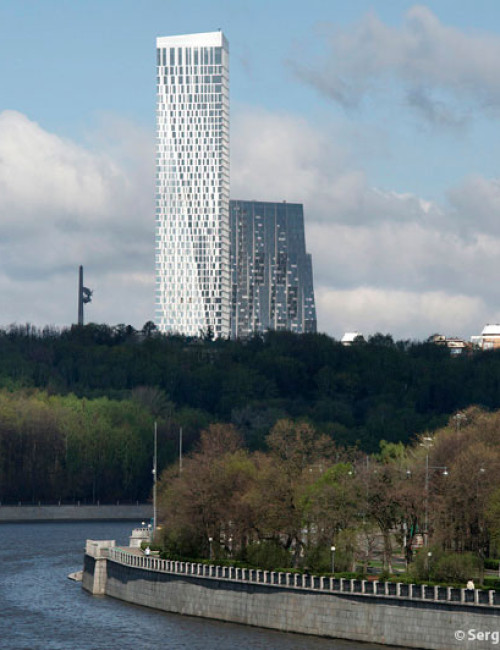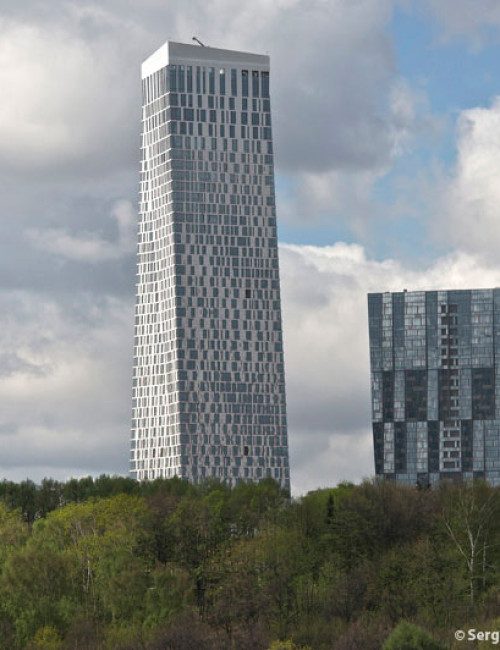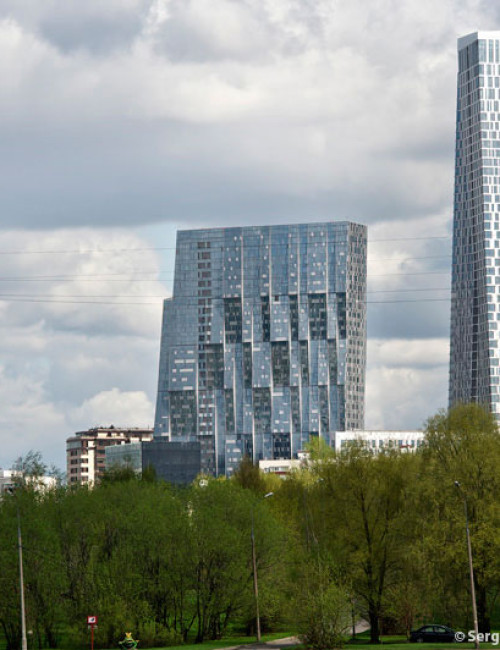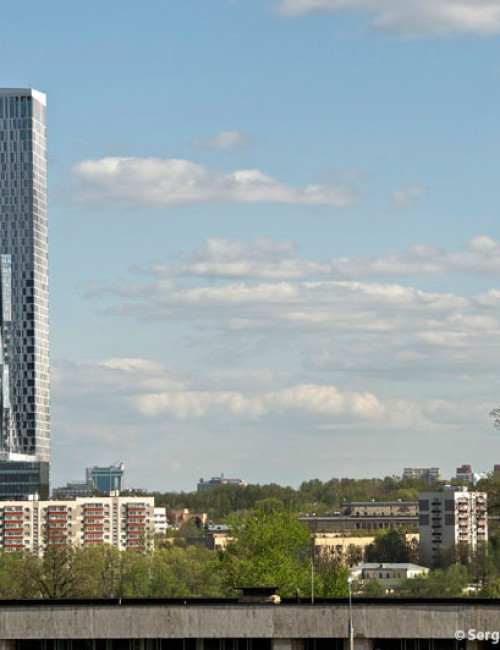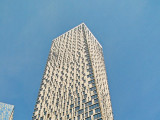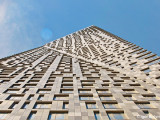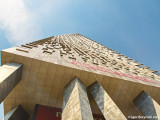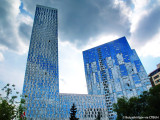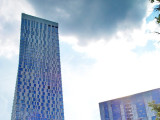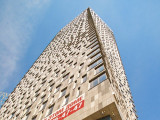Height rank
House on Mosfilmovskaya Tower A
Moscow
- Facts
-
Metrics
You must be a CTBUH Member to view this resource.
Official Name
House on Mosfilmovskaya Tower A
Other Names
House on Mosfilmovskaya 1
Name of Complex
Type
Building
Status
Completed
Completion
2012
Country
City
Address
Function
A mixed-use tall building contains two or more functions (or uses), where each of the functions occupy a significant proportion of the tower's total space. Support areas such as car parks and mechanical plant space do not constitute mixed-use functions. Functions are denoted on CTBUH "Tallest Building" lists in descending order, e.g., "hotel/office" indicates hotel function above office function.
Residential
Structural Material
Both the main vertical/lateral structural elements and the floor spanning systems are constructed from steel. Note that a building of steel construction with a floor system of concrete planks or concrete slab on top of steel beams is still considered an “all-steel” structure as the concrete elements are not acting as the primary structure.
All-Concrete
Both the main vertical/lateral structural elements and the floor spanning systems are constructed from concrete which has been cast in place and utilizes steel reinforcement bars and/or steel reinforced concrete which has been precast as individual components and assembled together on-site.
All-Timber
Both the main vertical/lateral structural elements and the floor spanning systems are constructed from timber. An all-timber structure may include the use of localized non-timber connections between timber elements. Note that a building of timber construction with a floor system of concrete planks or concrete slab on top of timber beams is still considered an “all-timber” structure as the concrete elements are not acting as the primary structure.
Mixed-Structure
Utilizes distinct systems (e.g. all-steel, all-concrete, all-timber), one on top of the other. For example, a Steel Over Concrete indicates an all-steel structural system located on top of an all-concrete structural system, with the opposite true of Concrete Over Steel.
Composite
A combination of materials (e.g. steel, concrete, timber) are used together in the main structural elements. Examples include buildings which utilize: steel columns with a floor system of reinforced concrete beams; a steel frame system with a concrete core; concrete-encased steel columns; concrete-filled steel tubes; etc. Where known, the CTBUH database breaks out the materials used within a composite building’s primary structural elements.
All-Concrete
Height
213.3 m / 700 ft
Floors Above Ground
53
Floors Below Ground
3
# of Apartments
226
# of Parking Spaces
375
# of Elevators
17
Top Elevator Speed
4 m/s
Tower GFA
53,478 m² / 575,632 ft²
Rankings
-
By function
You must be a CTBUH Member to view this resource.
-
By material
You must be a CTBUH Member to view this resource.
Construction Schedule
Proposed
Construction Start
Completed
You must be a CTBUH Member to view this resource.
Owner
VneshTorgBank
Developer
DON-Stroy
Architect
Usually involved in the front end design, with a "typical" condition being that of a leadership role through either Schematic Design or Design Development, and then a monitoring role through the CD and CA phases.
Sergey Skuratov Architects
Structural Engineer
The Design Engineer is usually involved in the front end design, typically taking the leadership role in the Schematic Design and Design Development, and then a monitoring role through the CD and CA phases.
Ivan Shipetin
MEP Engineer
The Design Engineer is usually involved in the front end design, typically taking the leadership role in the Schematic Design and Design Development, and then a monitoring role through the CD and CA phases.
Alexander Kolubkov
Contractor
The main contractor is the supervisory contractor of all construction work on a project, management of sub-contractors and vendors, etc. May be referred to as "Construction Manager," however, for consistency CTBUH uses the term "Main Contractor" exclusively.
Svargo Group
Material Supplier
Material Supplier refers to organizations which supplied significant systems/materials for a building project (e.g. elevator suppliers, facade suppliers, etc).
Material Supplier refers to organizations which supplied significant systems/materials for a building project (e.g. elevator suppliers, facade suppliers, etc).
SIGMA
HUECK-HARTMAN
Research

19 January 2011
Ups and Downs in Russia
Sergey Skuratov, Architectural Bureau of Sergey Skuratov
Faced with the possibility that his tallest project was to be shortened after it had been constructed to full height, Sergey Skuratov found himself making...
About House on Mosfilmovskaya Tower A
Mosfilmovskaya is composed of two towers which are unified by a third structure consisting of two parallel eight-story units, with a shared atrium that brings natural sunlight to the space. The complex is located near the open spaces of Poklonnaya Gora and the valley of the Setun River, and its composition is a reflection of this location. Positioned on a three-level base that contains underground parking lots, trade rooms, sport grounds, and separate office units, the connecting low story residences and main tower are lifted up 17m (56ft) by tilted columns made of cast-in-situ concrete.
The building’s architecture responds to the scarceness of other large buildings in the district, and the famous rich greenery of the Moscow State University campus and vast territories of the well-known “Mosfilm” factory of movies. A principle of segregation between private and public spaces was part of the fundamental program for the complex. Separation from residential users, office users and visitors, while concurrently providing all users access to the buildings’ many functions, was realized through optimization and planning to avoid loss of engineering and technology efficiency.
The construction site was chosen precisely at the break point of the longitudinal profile on the famous Mosfilmovskaya Street, and occupied only vacant spaces within the city block. To stress the size of the main tower, an eight-shade aluminum panel system from Japan was used as the finishing element to the suspended façade. These panels create a smooth transition from a bright white Carrara marble look at the top, to a dark shade of limestone at the bottom. A rhombus shaped floor plan is slightly but intentionally turned counterclockwise as it travels upwards, thus giving the main tower a slightly twisted shape. Its façades are made of three different types of glass, while the intertwining, basket-weave stripes subdue its monotony. Multiple outlets for retail and entertainment are seen throughout the building’s program, including a self-service store below the building’s ground level as well as shopping galleries, and a night club.
Subscribe below to receive periodic updates from CTBUH on the latest Tall Building and Urban news and CTBUH initiatives, including our monthly newsletter. Fields with a red asterisk (*) next to them are required.
View our privacy policy

